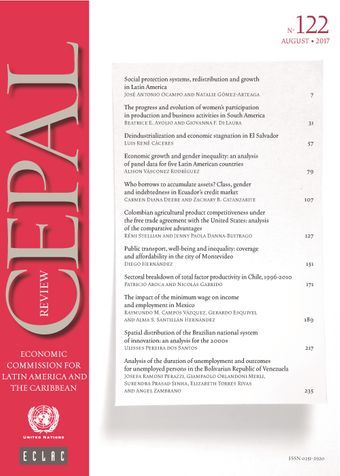-
Public transport, well-being and inequality: Coverage and affordability in the city of Montevideo
- Source: CEPAL Review, Volume 2017, Issue 122, Aug 2017, p. 151 - 169
- Spanish
-
- 05 Jan 2018
Abstract
Public transport is key to ensuring people’s ability to access the opportunities offered by the city. Unlike other types of transport such as automobiles, public transport is the means that exerts the least monetary pressure on users and most decommodifies mobility. This article analyses the levels of spatial coverage of public transport and the affordability of the service in Montevideo. It also seeks to identify patterns of stratification among diverse socioeconomic groups. The indicators presented show high levels of basic network coverage, coinciding with a growth pattern developed by following spatial and timetable demand. This coverage has a number of stratified differences in access, in particular when affordability is considered. The evidence indicates that household expenditure shows a regressive distribution in relation to access.





